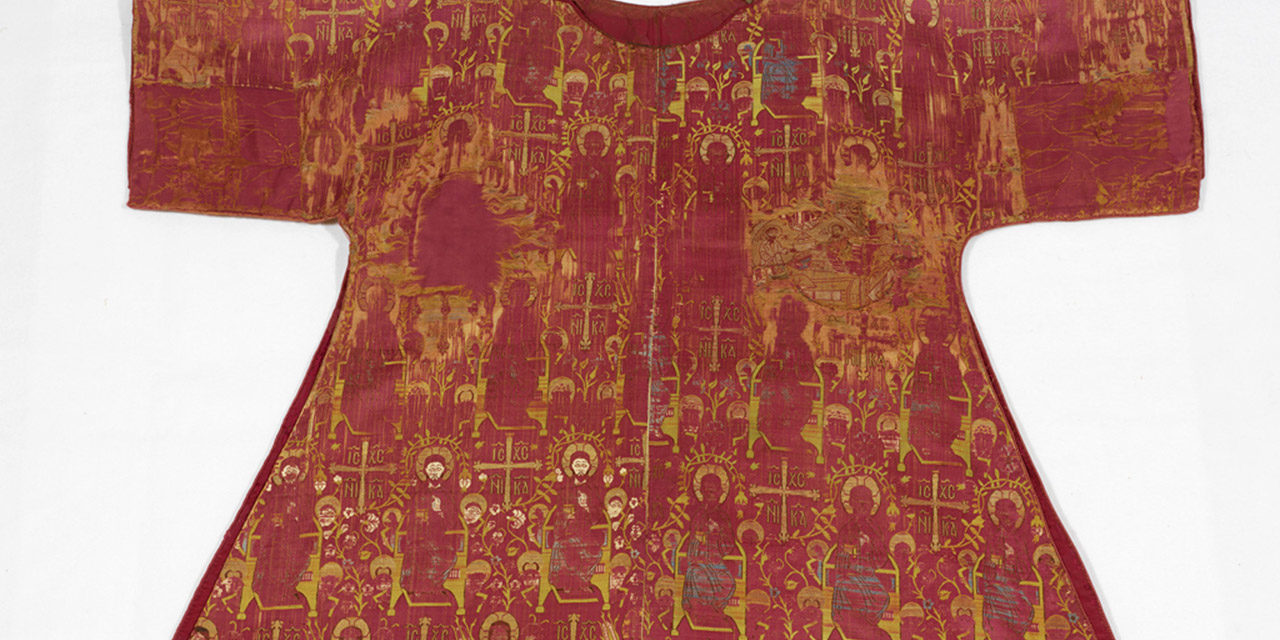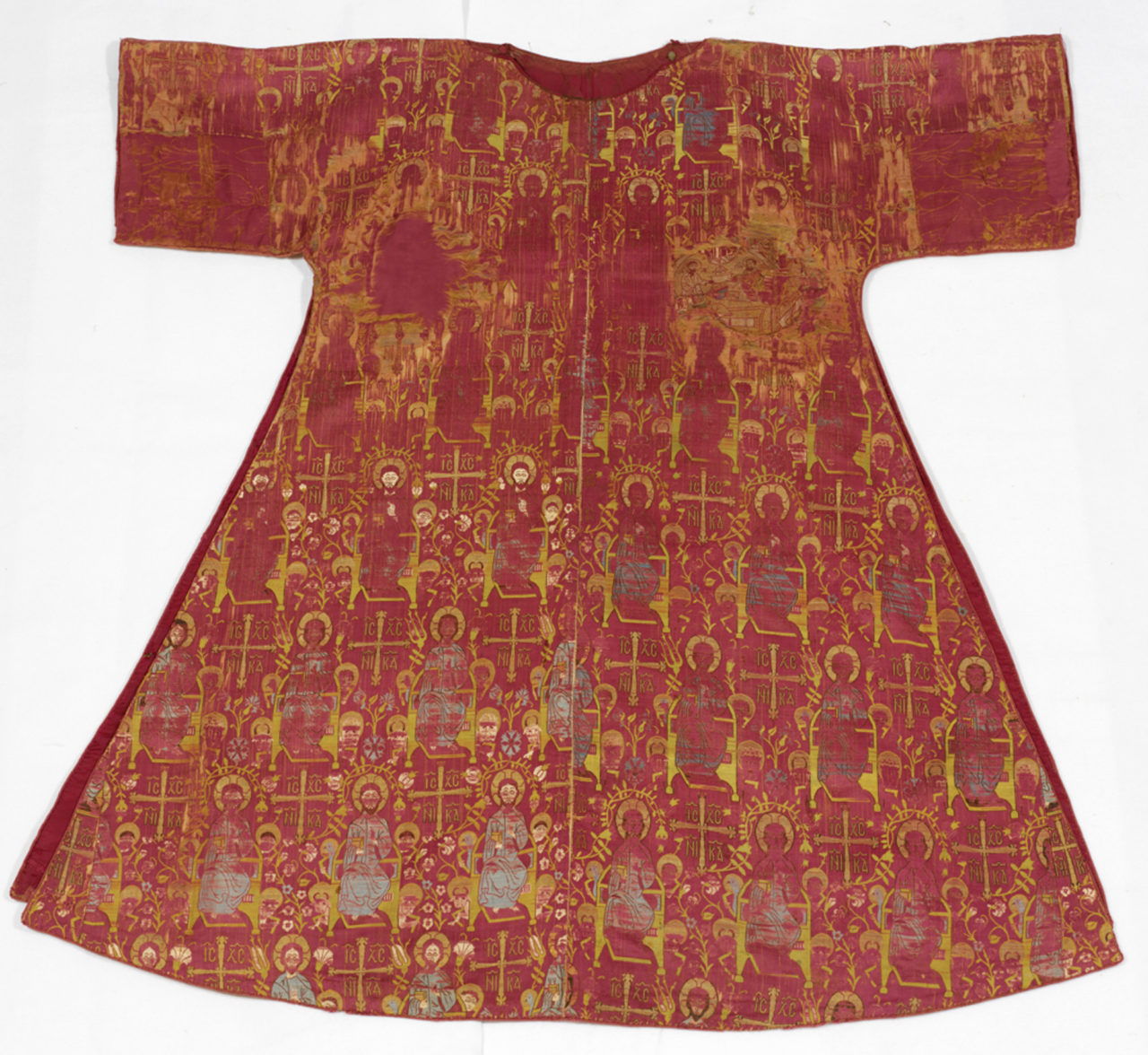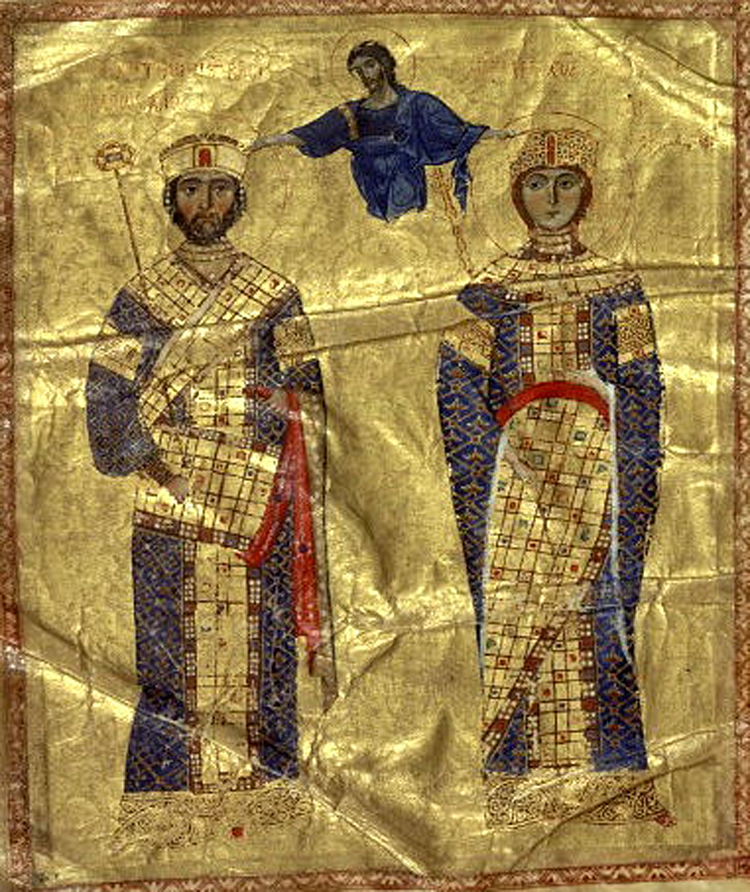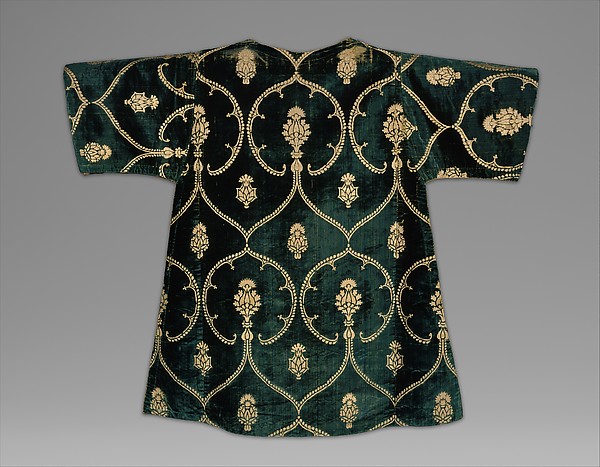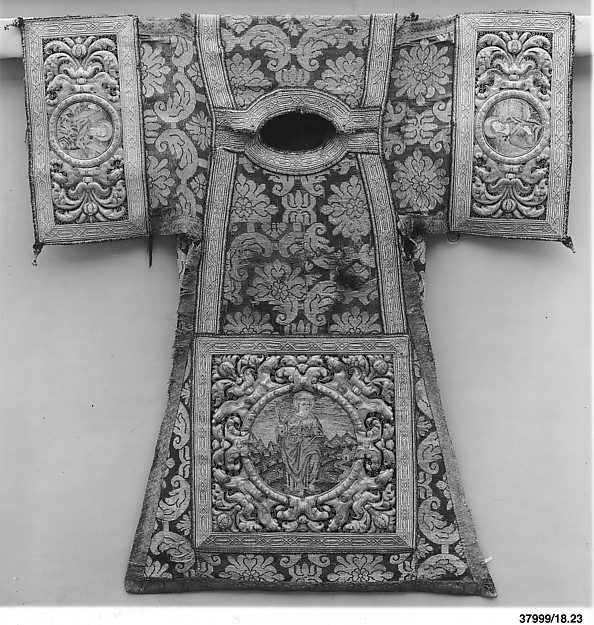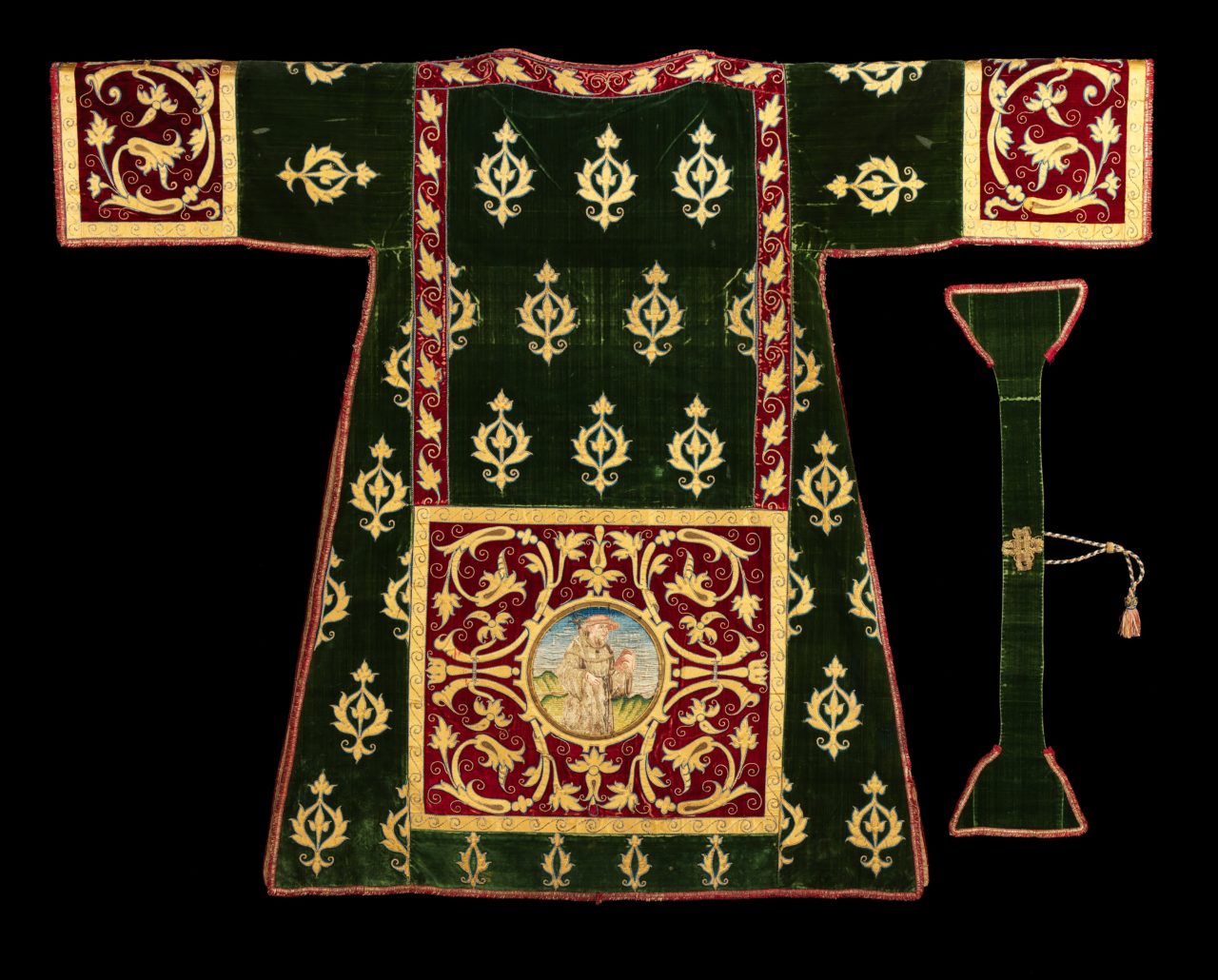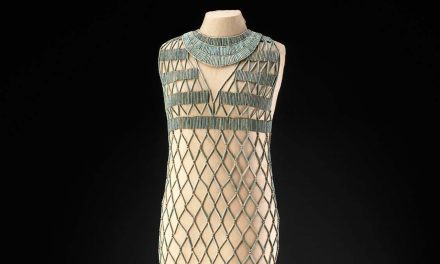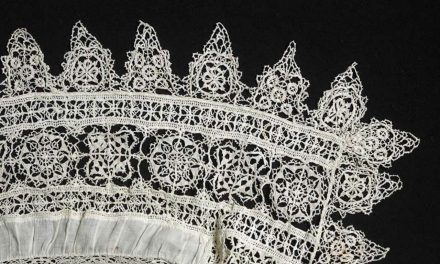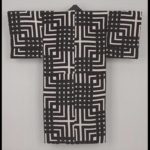A t-shaped tunic with very wide sleeves. Worn by both men and women during the Byzantine empire.
The Details
A
ccording to the Dictionary of Fashion History, the dalmatic is dated to ca. 300 CE onwards and defined as:
“A long, T-shaped, tunic-like garment with wide sleeves and a slit at either side of the skirt. Possibly derived from the classical tunic, it was worn as an ecclesiastical vestment and by rulers on solemn occasions such as coronations.”
In 11th-Century Byzantine Clothing Construction, Christine Misterka notes that dalmatic tunics were characterized by wide sleeves, as seen in Figs. 1 & 2 . This image illustrates how imperial families decorated their tunics with appliquéd decorations and ornamented them with gold details.
Sarah-Grace Heller, author of Early Evidence of Fashion in West Europe, describes the dalmatic in the beginning of the third century, stating:
“The early third century brought a new style: the dalmatic, with long, tight sewn sleeves. It frequently employed colorful tapestry-woven wool trim to finish the neck, hem, and wrists and embellish the shoulder. These “roundels” (they often feature figures woven into a circle shape) represent a new locus of individual choice and self-expression: an element open to fashion.”
Fig. 1 - Maker unknown (Turkish, Bursa). Dalmatic, 1550-1600. Silk; compound weave; center back length: 132.1 cm (52 in). Providence: Rhode Island School of Design, 28.008. Source: RISD
Fig. 2 - Artist unknown. Christ Crowning Michael VII Doukas (relabeled Nikephoros III Botaneiates) and Maria of Alania. Illustration from the Homilies of John Chrysostom. Evans, Helen C. and William D. Wixom, ed., between 1074 and 1081. Paris: Bibliothèque nationale de France. Manuscript Coislin 79 folio 2 bis verso. Source: Wikimedia
Fig. 3 - Maker unknown (Italian). Dalmatic, 15th century. Silk and metal thread; 104.1 x 113.0 cm (92 x 52 3/4 in). New York: The Metropolitan Museum of Art, 1975.1.1807. Gift of Robert Lehman Collection, 1975.. Source: The Met
Fig. 4 - Maker unknown (Spanish). Dalmatic, 16th century. Silk and metal thread; 104.1 x 113.0 cm (92 x 52 3/4 in). New York: The Metropolitan Museum of Art, 18.23. Gift of Rogers Fund, 1918. Source: The Met
Fig. 5 - Maker unknown (Italian). Dalmatic and maniple, fourth quarter 17th century. Silk, metal; 119.4 x 78.7 cm (47 x 31 in). New York: The Metropolitan Museum of Art, 2009.300.3412a, b. Brooklyn Museum Costume Collection at The Metropolitan Museum of Art, Gift of the Brooklyn Museum, 2009; Gift of the Rembrandt Club, 1911. Source: The Met
Its Afterlife
Dolce & Gabbana take a great deal of inspiration from the tunic. For their Spring 2014 ready-to-wear fashion show (Figs. 5 & 6), we can clearly see that they are all in a T-shape tunic with large sleeves like a dalmatic.
Fig. 5 - Dolce & Gabbana (Italian). Ready-To-Go, Spring 2014. Source: Vogue
Fig. 6 - Dolce & Gabbana (Italian). Ready-To-Go, Spring 2014. Source: Vogue
References:
- Cumming, Valerie, C. W. Cunnington, and P. E. Cunnington. “Dalmatic.” In The Dictionary of Fashion History, 63. Oxford: Berg Publishers, 2010. Accessed January 06, 2018. https://www.bloomsburyfashioncentral.com/products/berg-fashion-library/dictionary/the-dictionary-of-fashion-history/dalmatic.
- “Dalmatic.” Wikipedia, October 18, 2017. https://en.wikipedia.org/w/index.php?title=Dalmatic&oldid=805990272.
- Heller, Sarah-Grace. “Early Evidence of Fashion in West Europe.” In Berg Encyclopedia of World Dress and Fashion: West Europe, edited by Lise Skov. Oxford: Berg, 2010. Accessed January 06, 2018. http://dx.doi.org/10.2752/BEWDF/EDch8411.
- Misterka, Christine. “11th Century Byzantine Clothing Construction.” Accessed September 17, 2017. https://docs.google.com/document/d/1yyNfYJAuEauFozftZgoy7N_ICJ7xifMZFWIb0vgqYkM/edit?pli=1

